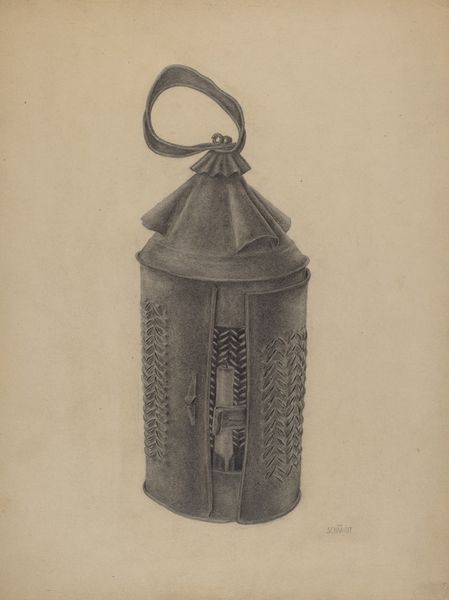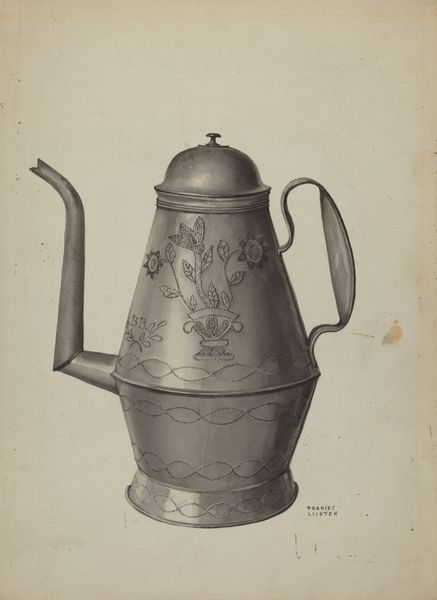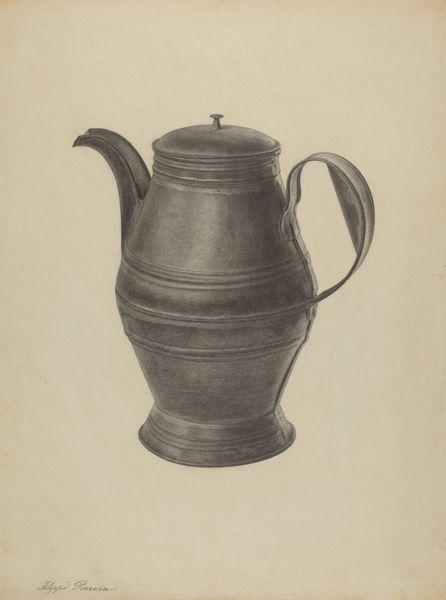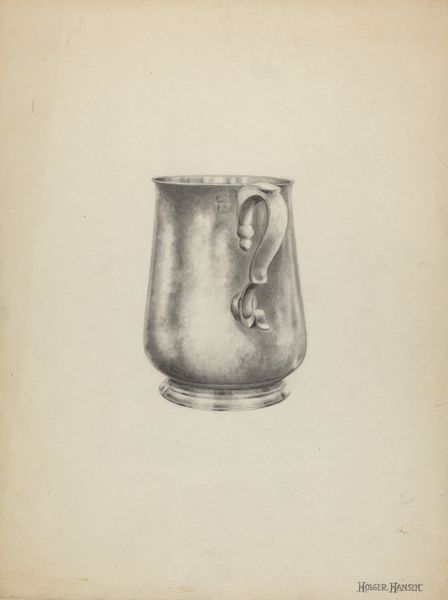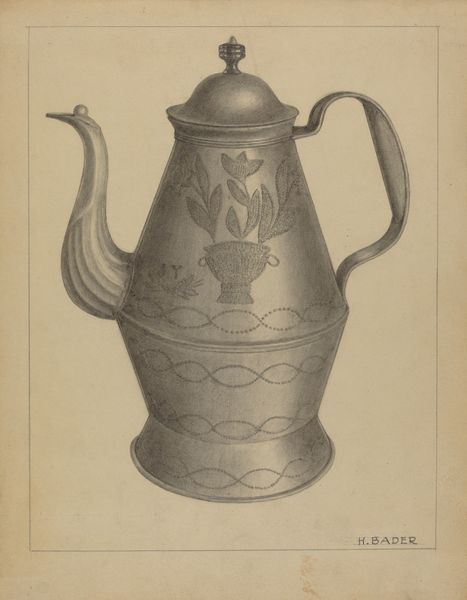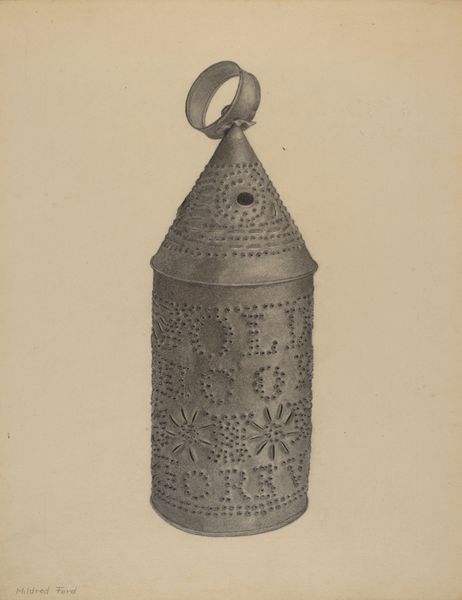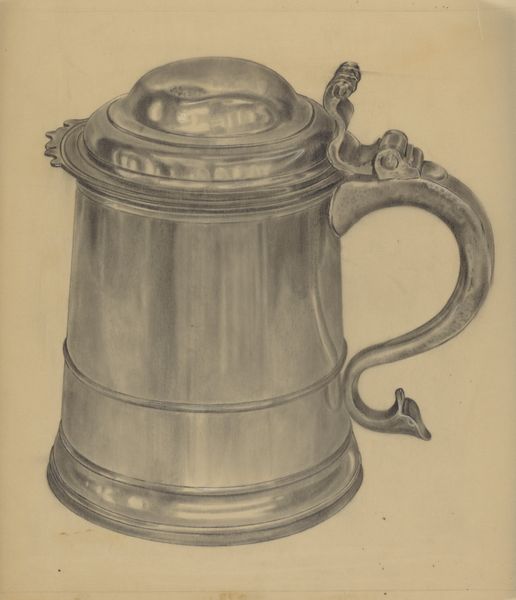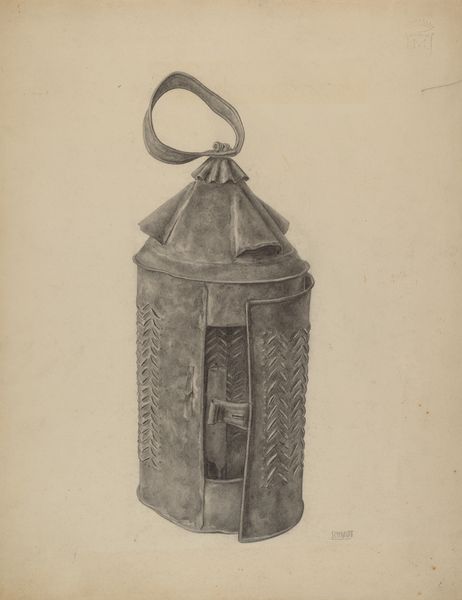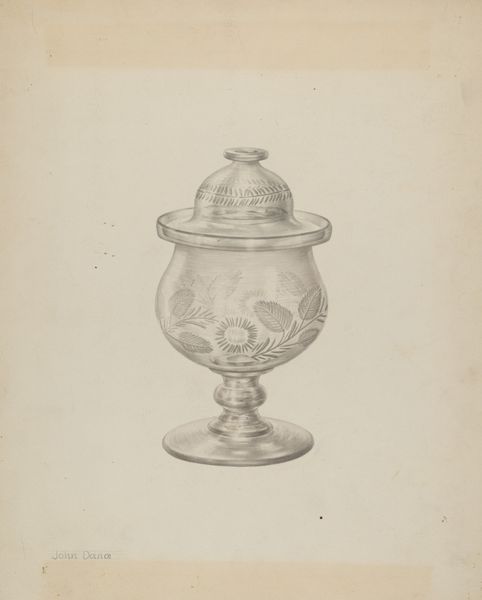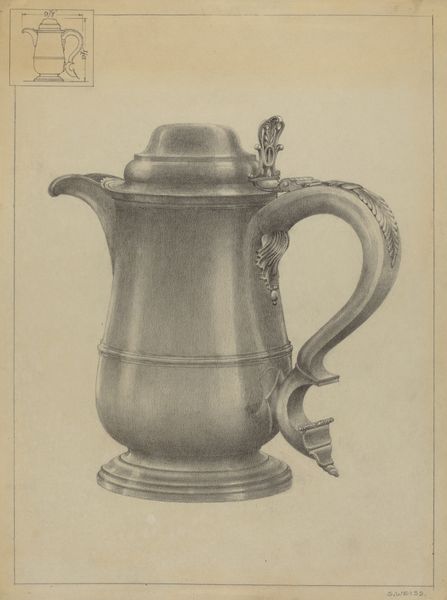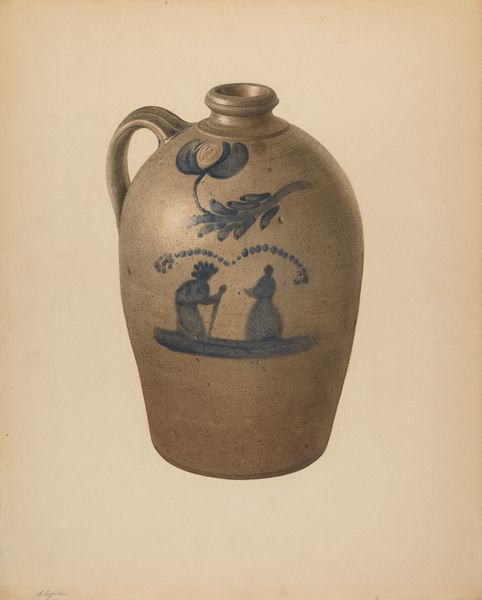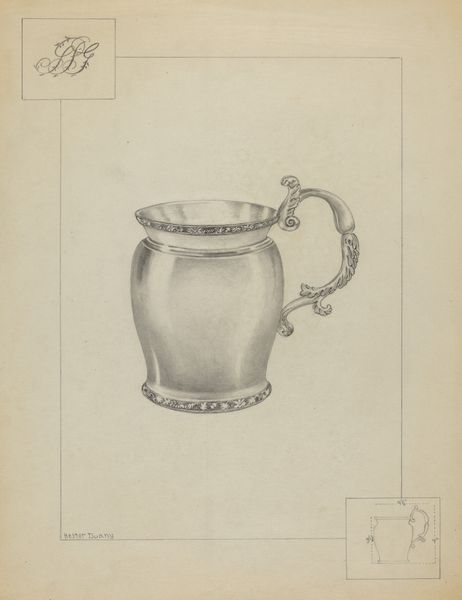
drawing, pencil
#
pencil drawn
#
drawing
#
pencil drawing
#
coloured pencil
#
geometric
#
pencil
#
realism
Dimensions: overall: 28.9 x 22.4 cm (11 3/8 x 8 13/16 in.) Original IAD Object: 6" in diameter; 15 1/4" high
Copyright: National Gallery of Art: CC0 1.0
Curator: Looking at "Lantern," a drawing made circa 1937 by Bernard Krieger, my immediate feeling is one of shadowy domesticity. Editor: Yes, I feel that too. A single light source, painstakingly rendered in pencil—almost austere. What materials were available, what was the intended use of this specific object? Curator: Beyond the immediate use of providing light, the lantern becomes a vessel of associated meaning, a container of safety and hope in perhaps uncertain times. We're talking about the late 1930s. There's a great sense of both beauty and utility—it isn’t simply functional. Editor: Right, because the drawing reveals such careful craftsmanship, almost ornamental. Look at the detail in those tiny, punched-out designs—radial symmetry, little geometric constellations that were not purely utilitarian at all. Consider the labor: someone meticulously crafting this. What kind of workshop produced such objects? What social status would the user have had? It hints at access, a comfortable if constrained life. Curator: Indeed. The punched designs bring to mind star maps or astrological symbols – further suggesting a yearning for something beyond the immediate reality, for orientation in the world, perhaps even suggesting something divine. Light as knowledge, warding off metaphorical, as well as real, darkness. It also possesses that particular intimacy we associate with crafted items – they feel individual, made with human care. Editor: The level of rendering in pencil, and it is only in pencil – invites close looking. No extravagant flourish, it favors careful, precise technique. What does the act of such concentrated drawing reveal about the artist, about Krieger’s relationship with this object, so that he has a compulsion to reproduce its shape with this method? And to share it as an image, rather than the object itself. Curator: Yes, precisely, and in a sense, the artist creates his own kind of symbolic "light," shining a new kind of visual attention on a mundane object and thus asking the viewer to do the same. He prompts the audience to meditate, as much as illuminate a space with literal light. Editor: It's so grounded. So different from later machine-tooled versions, there’s humanity ingrained. Thinking about process helps illuminate its historical value beyond a simple aesthetic experience, because of its connections to everyday makers, whose work is not typically documented. Curator: A potent reminder that even in darkness, small points of crafted beauty, and simple materials carefully shaped, can create our own individual illumination. Editor: Exactly, transforming simple observation into a social document that holds meaning.
Comments
No comments
Be the first to comment and join the conversation on the ultimate creative platform.
